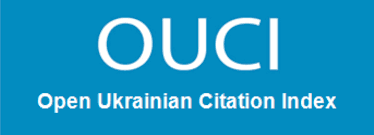Kuryata NV, Chechet OM, Gorbatyuk OI, Pishchanskyi OV, Balanchuk LV, Mekh NY, Zhovnir OM. Fluoroquinolone-resistant Escherichia coli strains in animal and poultry feed from Ukrainian feed-producing enterprises. Bìol Tvarin. 2025; 27 (1): 9–14. DOI: 10.15407/animbiol27.01.009.
https://doi.org/10.15407/animbiol27.01.009
Received 07.06.2024 ▪ Revision 05.02.2025 ▪ Accepted 20.03.2025 ▪ Published online 11.04.2025
Fluoroquinolone-resistant Escherichia coli strains in animal and poultry feed from Ukrainian feed-producing enterprises
N. V. Kuryata1, O. M. Chechet2, O. I. Gorbatyuk2, O. V. Pishchanskyi2, L. V. Balanchuk2, N. Y. Mekh2, O. M. Zhovnir3
This email address is being protected from spambots. You need JavaScript enabled to view it.
1Institute of Animal Biology NAAS, 38 V. Stus str. Lviv, 79034, Ukraine
2State Research Institute for Laboratory Diagnostics and Veterinary and Sanitary Expertise, 30 Donetska str. Kyiv, 03151, Ukraine
3Institute of Veterinary Medicine NAAS, 30 Donetska str., Kyiv, 03151, Ukraine
The article presents the results of studying the sensitivity of Escherichia coli strains isolated from animal and poultry feed samples to fluoroquinolones of the second (ofloxacin, norfloxacin), third (levofloxacin) and fourth (moxifloxacin) generations. It was shown that high resistance to norfloxacin was detected in 7 strains of isolated E. coli, which accounted for 33.3% of the identified ones. To ofloxacin and to the representative of the third generation of fluoroquinolones — levofloxacin, 3 isolated strains of E. coli were resistant, which was 14.3% of the studied strains. Resistance to the representative of the fourth generation of fluoroquinolones — moxifloxacin — was detected in 1 strain of E. coli, which was 4.8% of the tested strains. The results of the studies on fluoroquinolone resistance of the isolated E. coli strains indicate a significant contamination of animal and poultry feed with fluoroquinolone-resistant escherichia. This poses potential risks for the spread and possible transmission of such resistance to other bacterial species and the normobiota of the gastrointestinal tract of animals, poultry when ingested with feed and humans when consuming products of animal origin after feeding such feed.
Key words: Escherichia coli, fluoroquinolones, mixed fodder, bran, meal, premixes, animal meal, fish meal
- Baggio D, Ananda-Rajah MR. Fluoroquinolone antibiotics and adverse events. Austral Prescr. 2021; 2021; 44: 161–164. DOI: 10.18773/austprescr.2021.035.
- Chechet OM, Haidei OS, Andriiashchuk VO, Horbatiuk OI, Kovalenko VL, Musiiets IV, Ordynska DO, Skliar VV, Gutyj BV, Krushelnytska OV. Results of monitoring studies of caecal samples with animal contents for antimicrobial resistance in 2021. Sci Mess LNUVMBT Ser Vet Sci. 2022; 24 (106): 128–135. DOI: 10.32718/nvlvet10620.
- Coba-Males MA, Lavecchia MJ, Alcívar-León CD, Santamaría-Aguirre J. Novel Fluoroquinolones with Possible antibacterial activity in gram-negative resistant pathogens: In silico drug discovery. Molecules. 2023; 28 (19): 6929. DOI: 10.3390/molecules28196929.
- Fukushima S, Hagiya H, Uda K, Gotoh K, Otsuka F. Current prevalence of antimicrobial resistance in Okayama from a national database between 2018 and 2021. Acta Med Okayama. 2023; 77 (3): 255–262. DOI: 10.18926/AMO/65490.
- Hooper DC, Jacoby GA. Topoisomerase inhibitors: Fluoroquinolone mechanisms of action and resistance. CSH Persp Med. 2016; 6: a025320. DOI: 10.1101/cshperspect.a025320.
- Kanyuka OV, Pavliv OV. Antimicrobial efficacy of ofloxacin in surgical infections. Sci Bull LNUVMBT Gzhitsky. 2012; 14 (2/1): 141–145. Availsble at: http://nbuv.gov.ua/UJRN/nvlnu_2012_14_2(1)__28
- Kuryata N, Salyha Y, Chechet O, Horbatyuk O, Pishchanskyi O, Balanchuk L. Antibiotic resistance level of Escherichia coli isolates isolated from animal and poultry feed samples. Proc Int Sci Pract Conf “Actual Problems of Modern Biology, Animal Husbandry and Veterinary Medicine”, October 3–4, 2024, Lviv, Ukraine. Bìol Tvarin. 2024; 26 (3): 83.
- Kushnir IM, Kolodiy GV, Murska SD, Semen IS, Berbeka UZ. Research of feed for productive animals for determination of general microbial pollution. Sci Tech Bull SSRCIVMPFAIAB. 2021; 22 (2): 230–236. DOI: 10.36359/scivp.2021-22-2.26.
- Lavruk VV. Technological processes in the production of livestock products. Agrosvit. 2017; 12: 15–19. Available at: http://www.agrosvit.info/?op=1&z=2425&i=2
- Lungu IA, Moldovan OL, Biriș V, Rusu A. Fluoroquinolones hybrid molecules as promising antibacterial agents in the fight against antibacterial resistance. Pharmaceutics. 2022; 14 (8): 1749. DOI: 10.3390/pharmaceutics14081749.
- Mori H, Suzuki H. Update on quinolone-containing rescue therapies for Helicobacter pylori World J Gastroenterol. 2020; 26 (15): 1733–1744. DOI: 10.3748/wjg.v26.i15.1733.
- Nalyvaiko LI, Rodionova KO, Avdosieva IV, Ivleva OV. The spread of bacterial infection through feeds and productsof animal origin. Agr Visnyk Prychornomoria. 2019; 93: 154–159. Available at: http://lib.osau.edu.ua/jspui/handle/123456789/3305
- Nesterenko OM, Prokopenko BB, Nesterenko OO, Vorobyova TI. Rationale for the use of levofloxacin 750 mg intravenously for the treatment of severe community acquired pneumonia in the hospital (literature review). Emerg Med. 2019; 2 (97): 35–44. DOI: 10.22141/2224-0586.2.97.2019.161641.
- Pichura V, Potravka L, Domaratskiy Y, Vdovenko N, Stratichuk N, Baysha K, Pichura I. Long-term changes in the stability of agricultural landscapes in the irrigated agriculture of the Ukraine Steppe Zone. J Env Eng. 2023; 24 (3): 188–198. DOI: 10.12911/22998993/158553.
- Shariati A, Arshadi M, Khosrojerdi MA, Abedinzadeh M, Ganjalishahi M, Maleki A., Heydary M, Hoshnud S. The resistance mechanisms of bacteria against ciprofloxacin and new approaches for enhancing the efficacy of this antibiotic. Front Public Health. 2022; 10: 1025633. DOI: 10.3389/fpubh.201025633.
- Stepasiuk LM, Lopanchuk AA. Fodder production as the main factor in the effective development of the livestock sector. Econ Agr Indust Comp. 2016; 4: 28–32. Available at: https://eapk.com.ua/uk/journals/tom-23-4-2016/kormovirobnitstvo-yak-osnovny-chinnik-efektivnogo-rozvitku-galuzi-skotarstva
- The European Committee on Antimicrobial Susceptibility Testing. Breakpoint tables for interpretation of MICs and zone diameters. Version 14.0, 2024. Available at: http://www.eucast.org
- The European Committee on Antimicrobial Susceptibility Testing. Routine and extended internal quality control for MIC determination and disk diffusion as recommended by EUCAST. Version 13.2, 2023. Available at: http://www.eucast.org
- Veklenko YA, Hetman NI, Zakhlebna TP, Ksenchina OM. Productivity of feed cultures and efficiency of their production for organic production of plant raw materials. Feed Feed Prod. 2020; 89: 143–150. DOI: 10.31073/kormovyrobnytstvo202089-14.














